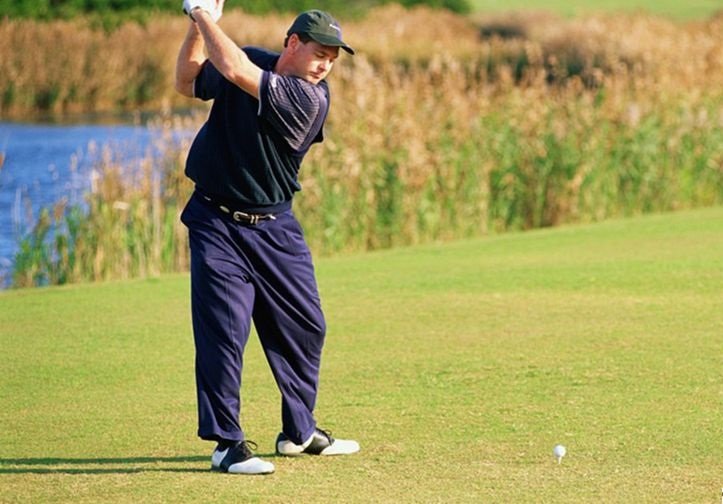
Golf, it’s that amazing sport known for its precision and finesse, where every little detail can make or break your game. And one of the biggest game-changers? Your backswing. In this article, we’re diving into the fascinating world of backswings in golf, and why it’s not a one-size-fits-all situation. By the time you’re done reading, you’ll see how this subtle aspect can totally up your golf game.
The Basics of the Backswing
But before we get into the nitty-gritty of why backswings are unique to each golfer, let’s break down what a backswing is. It’s that initial movement where your golf club starts to move away from the ball. And believe it or not, this simple motion sets the stage for the entire swing and, most importantly, how you connect with the ball. It’s like the opening act to the golfing show.
The Crucial Role of a Good Backswing
So, why does a good backswing matter so much? Well, it’s like the foundation of your golfing skills. Here are a few key reasons why nailing your backswing is a game-changer:
Consistency: A smooth, consistent backswing means you’re bringing that same, reliable swing to every shot. That kind of consistency is your ticket to predictability on the course.
Control: Your backswing sets up your club’s angle and the direction it’s headed. And trust us, controlling the club is vital for keeping that ball on target.
Power: Ever wonder where you get all that power for long drives? It’s the backswing! The longer it is, the more energy you can unleash in the downswing, giving your shots the oomph they need.
Varying Backswing Lengths
Now, let’s tackle the fun part: why backswing length isn’t a one-size-fits-all deal. Golfers are as diverse as clubs in a bag, and what works for one might not work for another. Here’s why there’s variation:
Physical Differences: We’re not all built the same. Some folks can bend and twist more than others. So, naturally, the ideal backswing length will be different based on your body’s unique traits.
Skill Level: Beginners often benefit from shorter, more controlled backswings that prioritize accuracy. Seasoned golfers, however, might need a longer backswing to go the distance.
Swing Plane: Everyone’s got their own swing plane, the path their club follows. Your backswing should sync up with your unique swing for the best results.
Club Choice: Different clubs, different strokes. Irons and drivers have different demands, so their ideal backswing lengths aren’t the same.
Introduction
Golf is a sport known for its precision and finesse, where the length of your backswing plays a pivotal role in determining the outcome of your shot. The backswing is a crucial element of the golf swing, and its length should not be one-size-fits-all. In this article, we will explore the significance of understanding the length of your backswing in golf and why it should vary from golfer to golfer. By the end, you will appreciate how this nuanced aspect can significantly improve your golf game.
The Fundamentals of the Backswing
Before we delve into the variations in backswing length, let’s first understand the fundamentals of the backswing. The backswing is the initial movement of the golf club away from the ball and sets the stage for the downswing and ultimately the impact with the ball. It is a crucial component of the golf swing and can significantly affect the direction and distance of your shot.
The Importance of a Proper Backswing
A proper backswing is essential for consistency, control, and power in your golf shots. Here are some key reasons why it is important:
1. Consistency. A consistent backswing ensures that you approach each shot with a reliable and repeatable motion. This consistency helps in producing predictable results on the golf course.
2. Control: The backswing helps in positioning the club correctly and sets the angle of the clubface, which greatly influences the direction of the shot. A well-executed backswing is critical for maintaining control over your ball.
3. Power. The backswing is where you store energy that will be released during the downswing. A longer backswing can generate more power, which is crucial for longer shots.
Variation in Backswing Length
Now, let’s discuss why the length of the backswing should vary from golfer to golfer. Gutters come in various shapes, sizes, and skill levels. What works for one player may not work for another. Here are some reasons for this variation:
1. Physical Differences: Golfers have different physical attributes. Some golfers may have greater flexibility, while others may have physical limitations. The ideal backswing length will vary based on an individual’s physical characteristics.
2. Skill Level: Beginners might benefit from shorter, mon controlled backswings that prioritize accuracy over distance. Advanced golfers, on the other hand, may need a longer backswing to maximize power and distance.
3. Swing Plane. Each golfer has a unique swing plane, which is the path the club follows during the swing. The length of the backswing needs to align with the golfer’s specific swing plane for optimal results.
4. Club Selection: The type of club being used also impacts the backswing. Different clubs, such as irons and drivers, require different backswing lengths to produce the desired results.